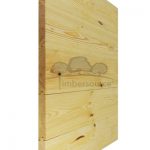As we evolve into a more sustainably-minded society, alternatives to plastic and single-use everyday items have started to become more common and sought after. Jute bags, made from the natural fibres found in the stem of the jute plant, are one alternative that has become increasingly popular over the years. They can be used for a variety of purposes, from carrying shopping or books to packaging small gifts.
In this article, we’ll take a closer look at how these jute bags are made, and what makes them such a great example of sustainable manufacturing.
Harvesting and Retting the Jute Plant
The very first step in making jute bags is to harvest the jute plant. Jute is primarily grown in India and Bangladesh, where the harvesting process is typically done by hand. The jute plant grows almost 12 feet in height and is cut at the base using a sickle or knife.
Once harvested, the jute plants are then retted to separate the fibres from the stem. Retting means that the jute plants are soaked in water for a few days to allow for the natural bacteria in the water to break down the binding of the fibre to the stem. This process will remove any impurities from the fibre.
Stripping, Spinning and Weaving the Jute Fibre
After retting, the jute plants are stripped to remove the fibres from the stem, a process typically done by hand using a wooden tool called a “toka”. When the fibres from the jute have been cleaned and dried, they’re spun into yarn using a spinning wheel. This involves twisting the fibres together to create a strong and durable thread that can be used for weaving. After the jute yarn has been spun, it is then woven into fabric using a loom. The jute fabric can be woven into a variety of different patterns or designs depending on the desired end product.
Designing the Jute Bag
Once it’s woven, the jute fabric can be cut into any desired shape and size and sewn to create a jute bag. Once the dimensions are sorted and the jute bag is made, it can be printed or decorated with designs or logos using a variety of techniques, such as screen printing and embroidery. Although this step is optional, it’s a great way to add a personal touch to the bags and make them more attractive to customers if they’re being made for a business.
Jute bags are not only a perfect eco-friendly alternative to plastic bags, but their ethical and simple manufacturing process makes them a great sustainable option as we go into the future. By businesses and everyday consumers choosing jute bags over plastic, we can all do our bit to reduce waste and protect the environment for generations to come.



